I’d like to call this recipe as another tribute to the humble, staple, yet unmissable root vegetable in our kitchens, the aloo or potato. As interesting or unique as it may sound, the reality is that this Potato Sagu is a simple, vegan and tasty style of making a potato curry with some herbs and spices. This is a delicacy from the cuisine of Karnataka and is usually served with poori, chapatis and even Dosa or Idli.
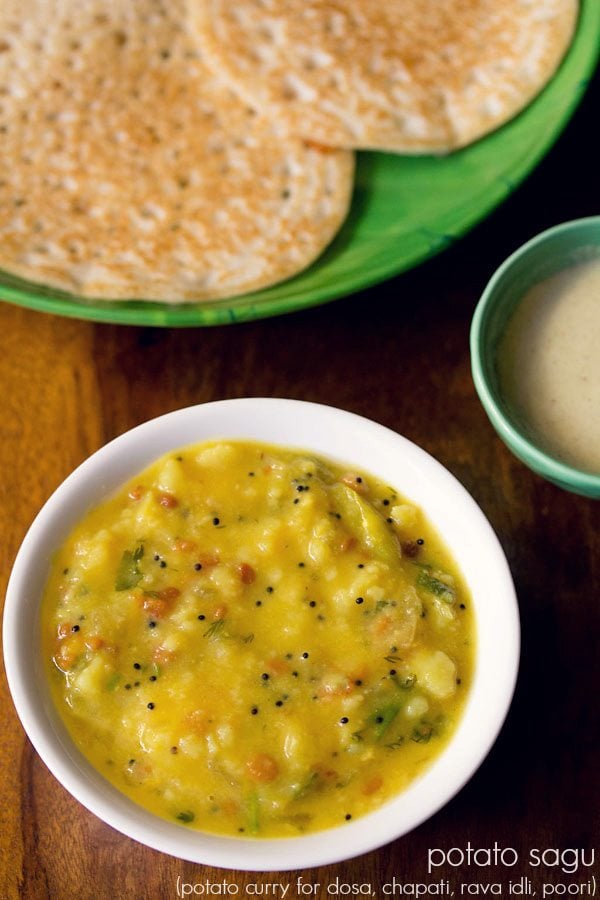
Table of Contents
About Poori Sagu
Basically, another regional variation to the potato curry that is the ubiquitous pairing with a poori, I happened to get a taste of it while living in Bengaluru or Bangalore. Although there, I tried the Potato Sagu with a rava idli at one of the MTR (Mavalli Tiffin Room) restaurants.
Even this particular rava idli at this eatery was a larger one, as compared to what we made at home. It came with a side of the Potato Sagu and coconut coriander chutney, and changed the simple deal, into a deliciously amazing one. You should try my version of this Coriander Coconut Chutney too.
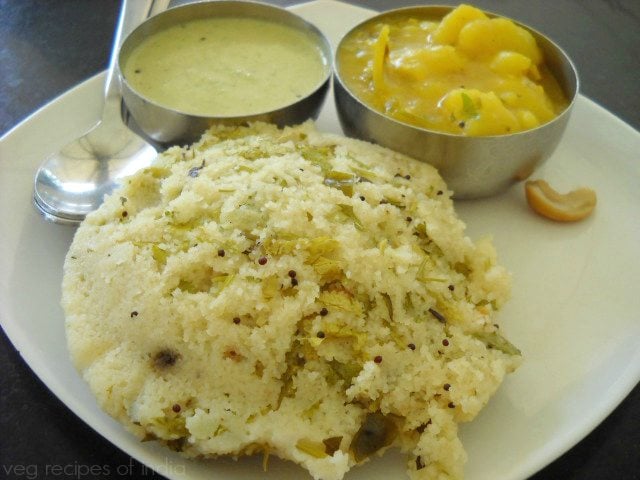
Just like this Potato Sagu being served with pooris, the potato curry-poori combination is quite a favorite and chosen one across the Indian subcontinent.
You will find different regional variations as you change a state. The North Indian states have their own distinct recipes like this Aloo Puri, so is the case with South Indian states.
A popular Goan way of preparing it is the patal bhaji, the dry version of which is known as sukha bhaji. Other than the Karnataka special Potato Sagu, a typical potato preparation called Poori Masala is well-known in Tamil Nadu. All of these are usually enjoyed with pooris.
I have also travelled a lot in Maharashtra and found out that the Marathi style Poori Bhaji is a delightful breakfast option available in many restaurants, hotels as well as dhabas (roadside eateries) there.
More on Bombay Sagu
Potato Sagu is also famous as Bombay Sagu. Though, it’s quite a mystery to me, even till today, as to why it is called so. I have never seen or heard of anything of this sort in the eateries of Mumbai, not even the Udupi restaurants.
While you’re at this recipe of Potato Sagu, I’d also like to mention about one of my other favorite aloo curry recipes, the Banarasi style aloo ki sabzi with pooris.
I tried it during my trip to the holy city of Banaras or Varanasi, and since then the taste has stuck with me. Though, it was similar to my recipe of Aloo Rasedar.
You’ll really be happy while making this Potato Sagu as it doesn’t require much time to get done. You just need to begin by boiling the potatoes, the rest of the method is super easy.
I like the flavor of this dish with onions, so have added them. You can make it a no onion curry too. Green peas also taste good in this dish.
Also, usually the Potato Sagu curry has a medium consistency, not thick or thin but if you want to make it with a slightly thinner consistency, that is doable too and tastes just as lovely. If you don’t feel like crumbling the potatoes, you can chop them too.
In addition to this Potato Sagu, there is a variation of sagu that is made with mixed vegetables and is known as Veg Sagu. You can serve any of these with poori, chapati, rava idli, set dosa, neer dosa, poha dosa or even plain dosa. A side of coconut chutney is also a good option.
How to make Bombay Sagu
Cooking Potatoes
1. Rinse 3 to 4 medium potatoes very well and then boil or steam in a pressure cooker. If pressure cooking, pressure cook for 4 to 5 whistles. The potatoes should be cooked till soft and of a mashable consistency.
For stovetop pressure cooking, place the potatoes in a 3 litre pressure cooker. Add water almost covering the potatoes. You can also add a few pinches of salt if you prefer.
Pressure cook on medium heat for 4 to 5 whistles. When the pressure drops naturally in the cooker, then only open the lid.
Using tongs removed the cooked potatoes and place them on a plate to cool.
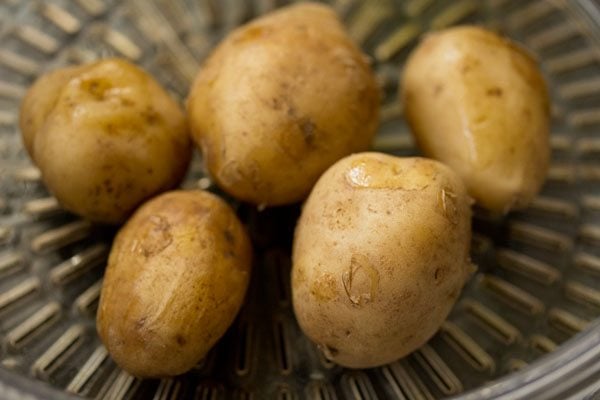
2. When the potatoes are still warm, peel and crumble them. You can also chop them and keep aside.

Make Potato Sagu
3. In a pan, heat 1 tablespoon oil. Add 1 teaspoon mustard seeds and let them splutter on low heat.
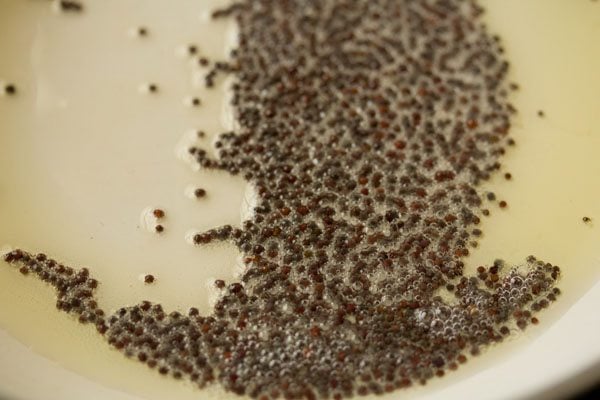
4. When the mustard seeds splutter, add 1 teaspoon urad dal and 1 teaspoon chana dal.
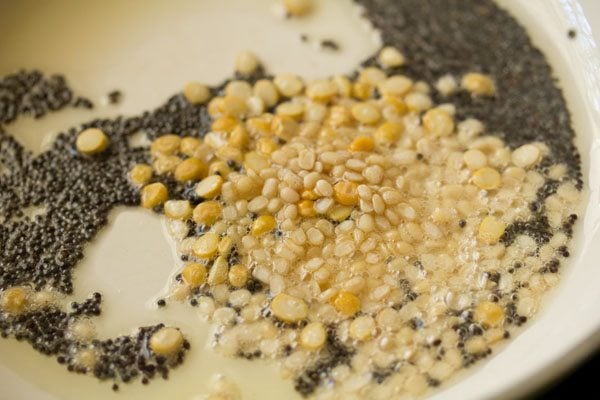
5. Stir and sauté on low heat stirring often till the lentils become golden.
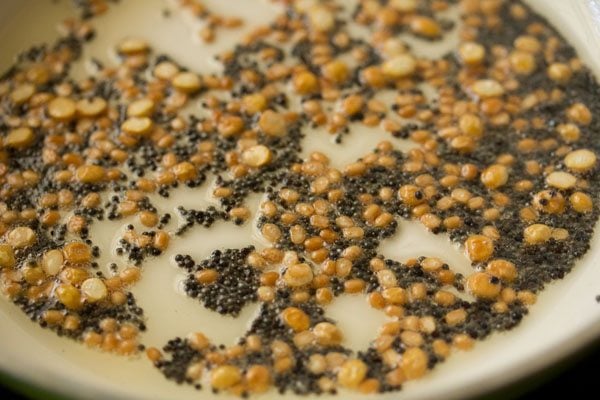
6. Then, add ⅔ cup chopped onions.
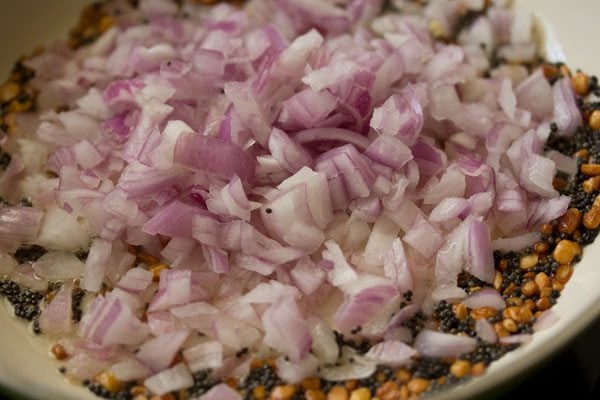
7. Sauté the onions till translucent on low to medium-low heat.
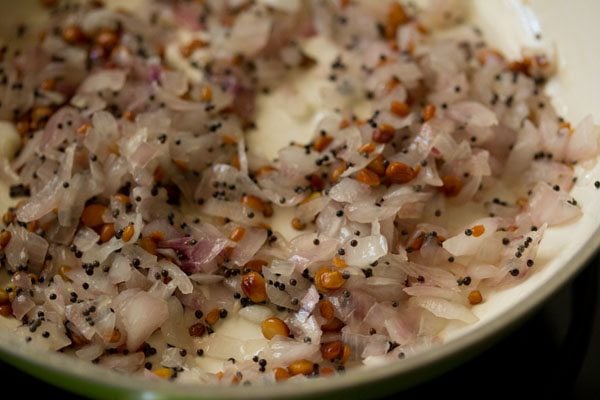
8. Now, add 1 or 2 chopped green chilies, 1 teaspoon chopped ginger and 10 to 12 curry leaves.
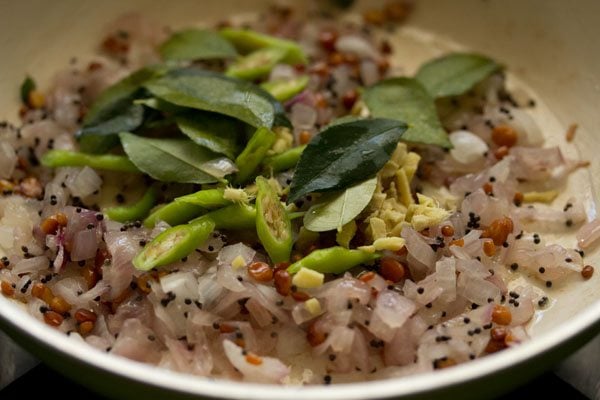
9. Next, add ¼ cup chopped tomatoes.

10. On low to medium heat, sauté the mixture for 2 minutes. Then, add ¼ teaspoon turmeric powder and a pinch asafoetida.
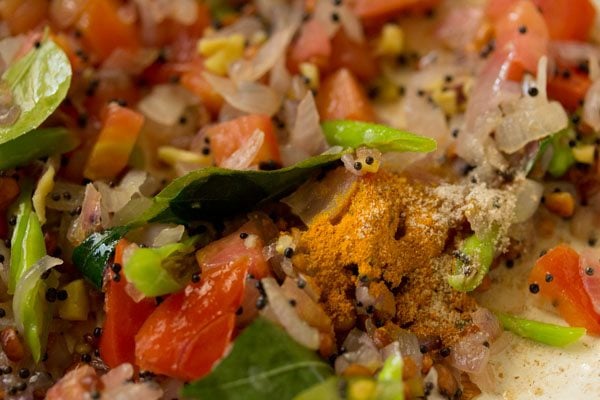
11. Mix and continue to sauté for 2 more minutes.
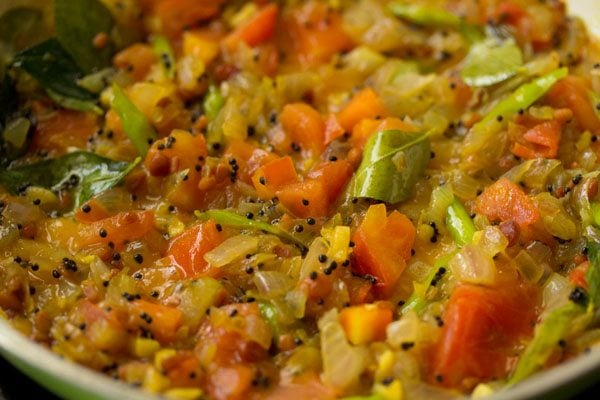
12. Then, add 2 teaspoons gram flour (besan).
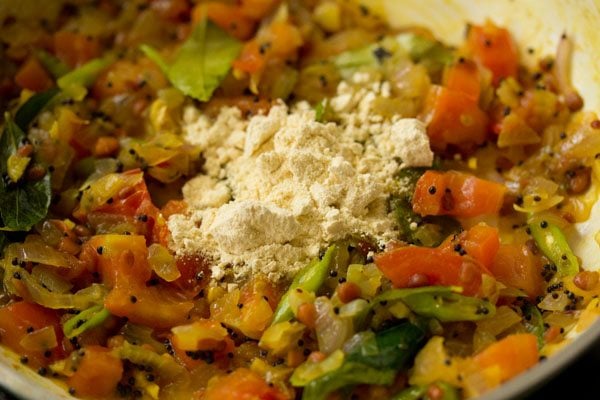
13. Mix the gram flour well with the onion-tomato mixture and sauté for a minute.
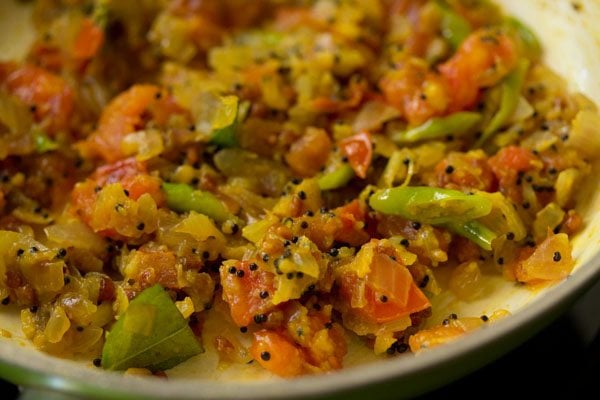
14. Add 1.25 cups water.
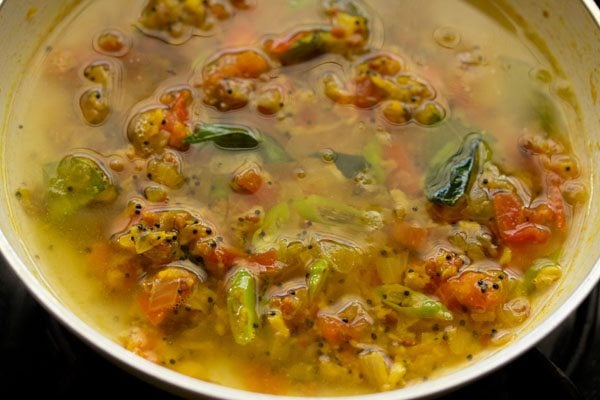
15. Stir and mix well.
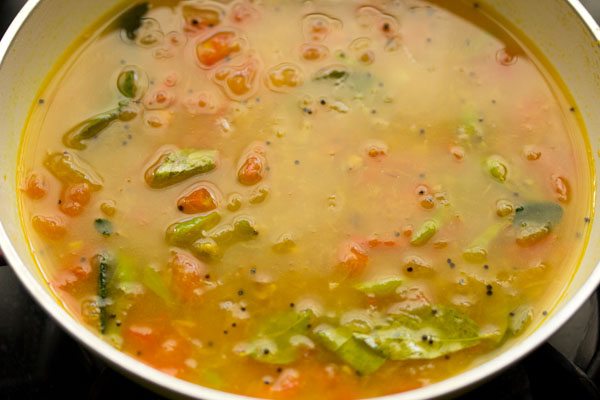
16. Bring the entire mixture to a gentle boil.
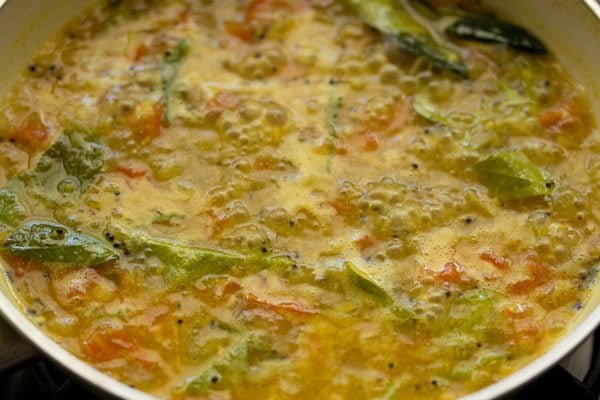
17. Add the crumbled potatoes.
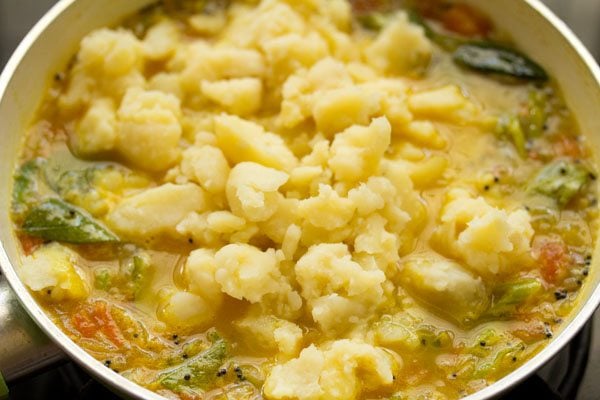
18. Mix the potatoes with the rest of the curry.
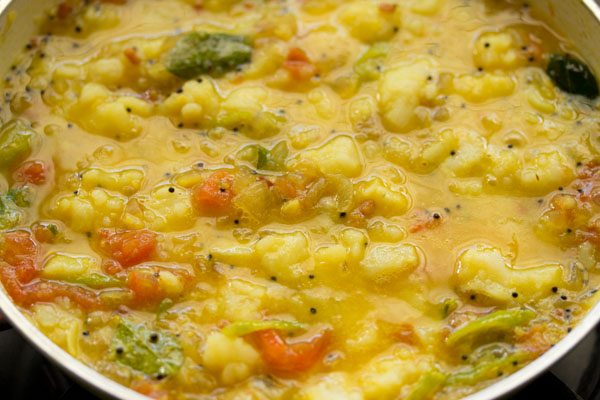
19. Season with salt.
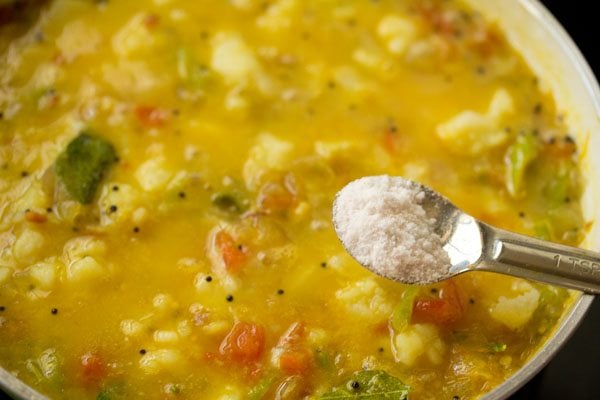
20. Cover the pan with a lid and simmer the potato curry on low heat for 7 to 8 minutes or till the curry thickens. Check once or twice while simmering.
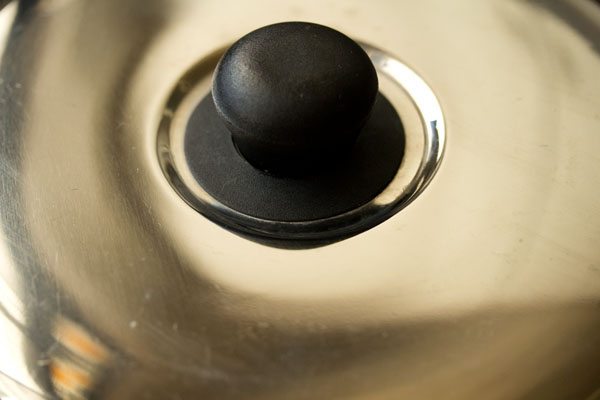
21. The curry should have a medium consistency and should not be thick or thin. A slight thin consistency is also fine. Check the taste, add more salt if required.
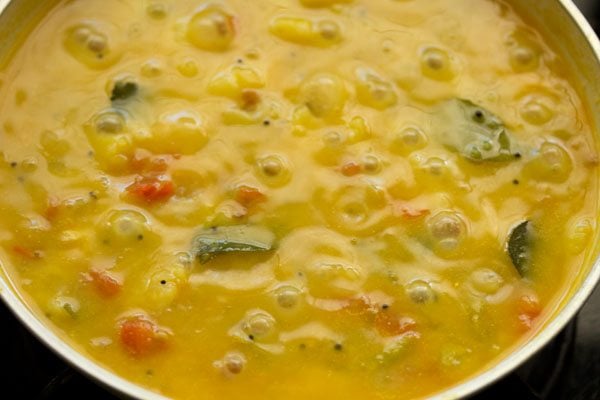
22. Lastly, add 1 to 2 tablespoons chopped coriander leaves and switch off the heat.
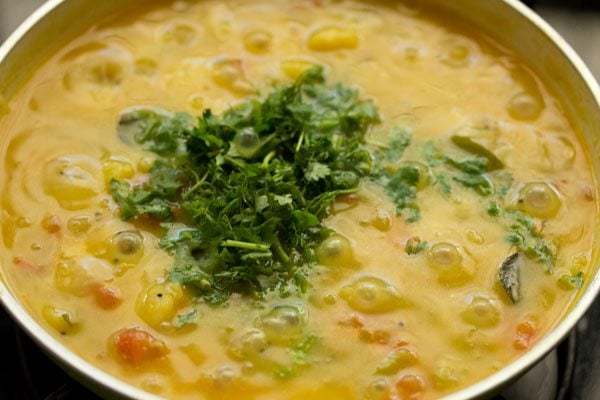
23. Serve Bombay Sagu hot with poori, dosa, rava idli, chapati or paratha.
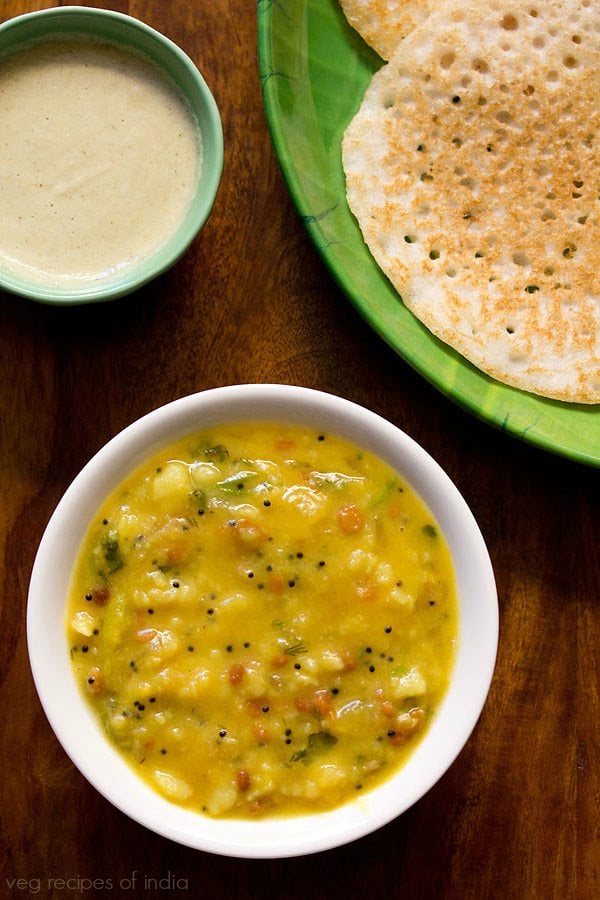
More Potato Recipes To Try!
Gluten Free Recipes
Indian Curry Recipes
Kashmiri Recipes
Potato Recipes
If you’ve tried this recipe, please rate it in the recipe card or leave a comment below – I’d love to hear your feedback. For more vegetarian inspiration, sign up for my email updates or follow me on Instagram, Youtube, Facebook, Pinterest or X.
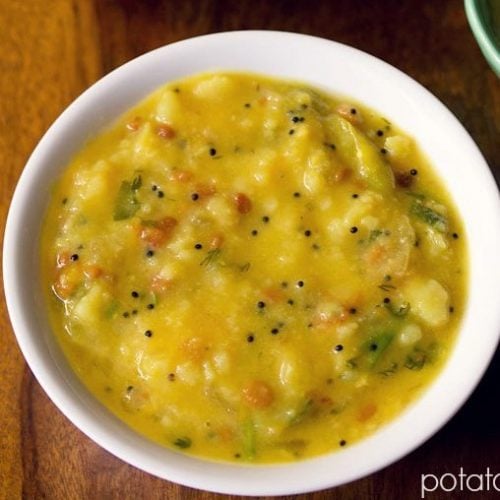
Poori Sagu | Bombay Sagu | Potato Sagu
Ingredients
- 250 grams potatoes or 3 to 4 medium potatoes – boiled, peeled and crumbled or 1.5 cups crumbled potatoes
- 1 tablespoon oil
- 1 teaspoon mustard seeds
- 1 teaspoon urad dal (split husked black gram)
- 1 teaspoon chana dal (husked and split bengal gram)
- 100 grams onion or 1 large onion, chopped or ⅔ cup chopped onions
- 1 or 2 green chilies – chopped or ½ to 1 teaspoon, chopped
- 1 inch ginger chopped or 1 teaspoon chopped ginger
- 7 to 8 curry leaves
- 1 tomato – small, or ¼ cup chopped tomatoes, optional
- ¼ teaspoon turmeric powder
- 1 pinch asafoetida (hing)
- 2 teaspoons gram flour (besan)
- 1.25 cups water or add as required
- salt as required
- 1 to 2 tablespoons coriander leaves – chopped
Instructions
Boiling potatoes
- Rinse 3 to 4 medium potatoes very well and then boil or steam them in a pressure cooker. If pressure cooking, then pressure cook for 4 to 5 whistles.You can also cook the potatoes in a pan or pot or in the Instant Pot adding water as needed.
- For stovetop pressure cooking, place the potatoes in a 3 litre pressure cooker. Add water almost covering the potatoes. You can also add a few pinches of salt if you prefer.Pressure cook on medium heat for 4 to 5 whistles. When the pressure drops naturally in the cooker, then only open the lid.Using tongs removed the cooked potatoes and place them on a plate to cool.
- When the potatoes are still warm, peel and crumble them. You can also chop them and keep aside.
Making potato sagu
- In a pan heat oil. Add mustard seeds and let them splutter on low heat.
- When the mustard seeds start to splutter, add urad dal and chana dal.
- Stir and sauté on low heat till the dals become golden.
- Then add the chopped onions. Sauté the onions until they soften and turn translucent.
- Now add chopped green chillies and ginger and also the curry leaves.
- Next add chopped tomatoes.
- Sauté for 2 minutes on low to medium heat and then add turmeric powder and asafoetida.
- Mix and continue to saute for 2 more minutes.
- Then add the besan or gram flour.
- Mix the besan very well and saute for a minute.
- Add water. Stir and mix well.
- Bring the entire mixture to a gentle boil.
- Add the crumbled potatoes.
- Mix the potatoes with the rest of the curry.
- Season with salt. Cover the pan with a lid and simmer potato sagu on a low heat for 7 to 8 minutes or more till the gravy thickens. Do check once or twice when simmering.
- The potato sagu gravy should have a medium consistency and should not be thick or thin.
- A slight thin consistency is also fine. Check the taste and add more salt if required.
- Lastly add the chopped coriander leaves and switch off the heat.
- Serve Bombay Sagu with dosa, rava idli, chapati, paratha or poori.
Notes
- Alter the consistency of the gravy by adding less or more water.
- For a spicy taste, add more green chillies.
- You can omit gram flour if you prefer.
- The recipe can be scaled to make for more servings.
Nutrition Info (Approximate Values)
This Poori Sagu from the archives first published in April 2016 has been republished and updated on January 2023.
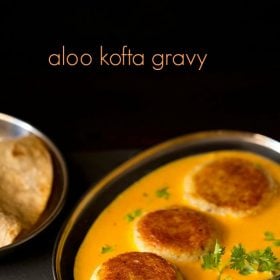
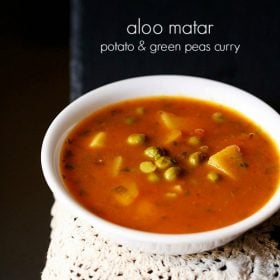
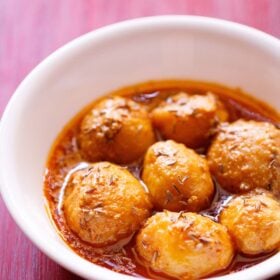
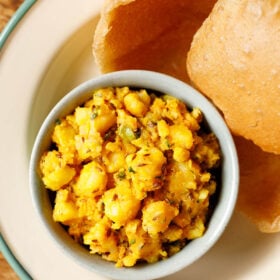
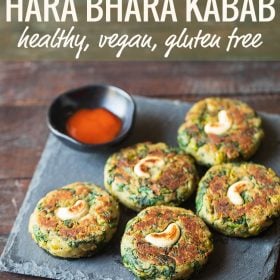
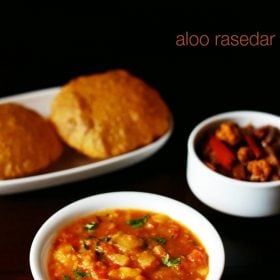







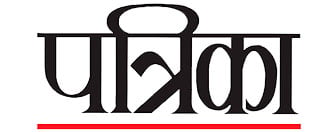
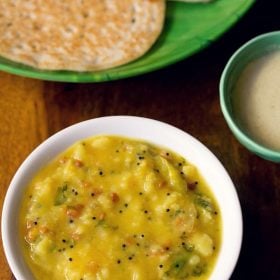
My husband and I have just started cooking on our own. We followed your potato sagu recipe to the letter and the curry came out really superb. Thank you for the detailed instructions and pics. It would be great if you could mention a typical measure for salt also in your recipes, though the quantity can vary according to each person’s taste. Just to ensure that salt doesn’t become too much.
thank you ranjani. glad to know you liked the potato sagu recipe. i do not add the measurement of salt as the taste varies from person to person. when readers ask me about salt quantities, i tell them a benchmark. for a recipe that has 3 to 4 servings, initially add 1/2 (half) teaspoon salt. mix and check the taste. if the taste is less, then add a bit more. go easy when adding like sprinkling a few pinches of salt. mix and then again taste.
addition of salt also depends at which step it is added in the recipe. so if you add it first in a curry-based dish and then the curry is reduced, always add less initially- say 1/4th to 1/3rd teaspoon and then a bit more can be added later once the curry is done. for recipes where salt-based ingredients are used – like soy sauce, salted butter, cheese etc, always go easy on the salt. add a few pinches first and then if required add some more later. hope this helps.
Dear Dassana Ji, I came here to see what Potato ‘Sagu’ was …. I just made Potato bhaji ( for a Jhat-Pat dosa – just Urad dal and Mung dal and little chana dal batter – ). I used your dosa bhaji recipe to make the potato bhaji. Now, what is this potato ‘sagu’ ?? I thought it meant you added some sabudana or something equally exotic. To my surprise, the only added ingredient was sauteed mustard seeds, ( which I add instinctively, to the ‘tadka’, in any case.)
Finally, I realised that sagu is, maybe, a kannada word for a curry-bhaji combination.
I know just a few kannada words, and one I learnt recently, is ‘kai’ meaning vegetable – like Avvakai etc. . If you will indulge me, to diverge just a little bit, I will tell you a little story. As I was told, a few years ago, my ancestors, were saraswat brahmins, who never ate or touched meat. They were reputedly from Kashmir, and slowly travelled south, until they reached the konkan coast. There, they saw all this fish, that was going to “waste”, and slowly they started tasting and eating the fish, and developed a fondness for it …. (lol) 😉
Now, they had a moral dilemma, of killing, and eating the flesh of a living animal …. which they ‘rationalized’ as follows :
1. First of all, you don’t have to actually kill a fish …. you just take it out of the water, and it dies, … all by itself …..
2. Secondly, since God, in his eternal wisdom, provided the fish, in copious amounts, in the seas, it ‘must’ be a vegetable …. hence Jhal-kai …. the ‘vegetable-of the sea’ …. 🙂
Dilemma and problem solved …. 😉
I deeply respect your vegetarianism, and the above is merely a humorous story, for your entertainment and enjoyment. No offense is meant.
Best wishes for the continued success of your massive blog !!@!
sagu means curry in kannada. potato sagu is a like potato curry which can be had with pooris or dosa. besan is also added which gives a smooth consistency in the dish. even on facebook when i had shared this recipe, i got comments why it is called sagu as no sago (sabudana) is added ????. i know about saraswat brahmins and the story is interesting. thanks for sharing and also for your good wishes.
Hi ,
I follow your site regularly. The way you explain the recipe makes me feel ok I can do this . Today I have made this recipe and it came out well my kids just loved it thank you for your recipes !
Welcome Sravanti. Glad to know this. Thanks for your positive feedback.
Made it this morning and as always you are a rockstar who makes me a rockstar ?. Need I say more?
of course not. your comment is super duper. thank you much sheetal 🙂
So tasty and easy method recipe
thank you ankita 🙂
soooooo good! I’m so glad I found your recipes!!!! thanks?
thanks noelia.
tasty simple goes with dosa and puris. everyone loved it